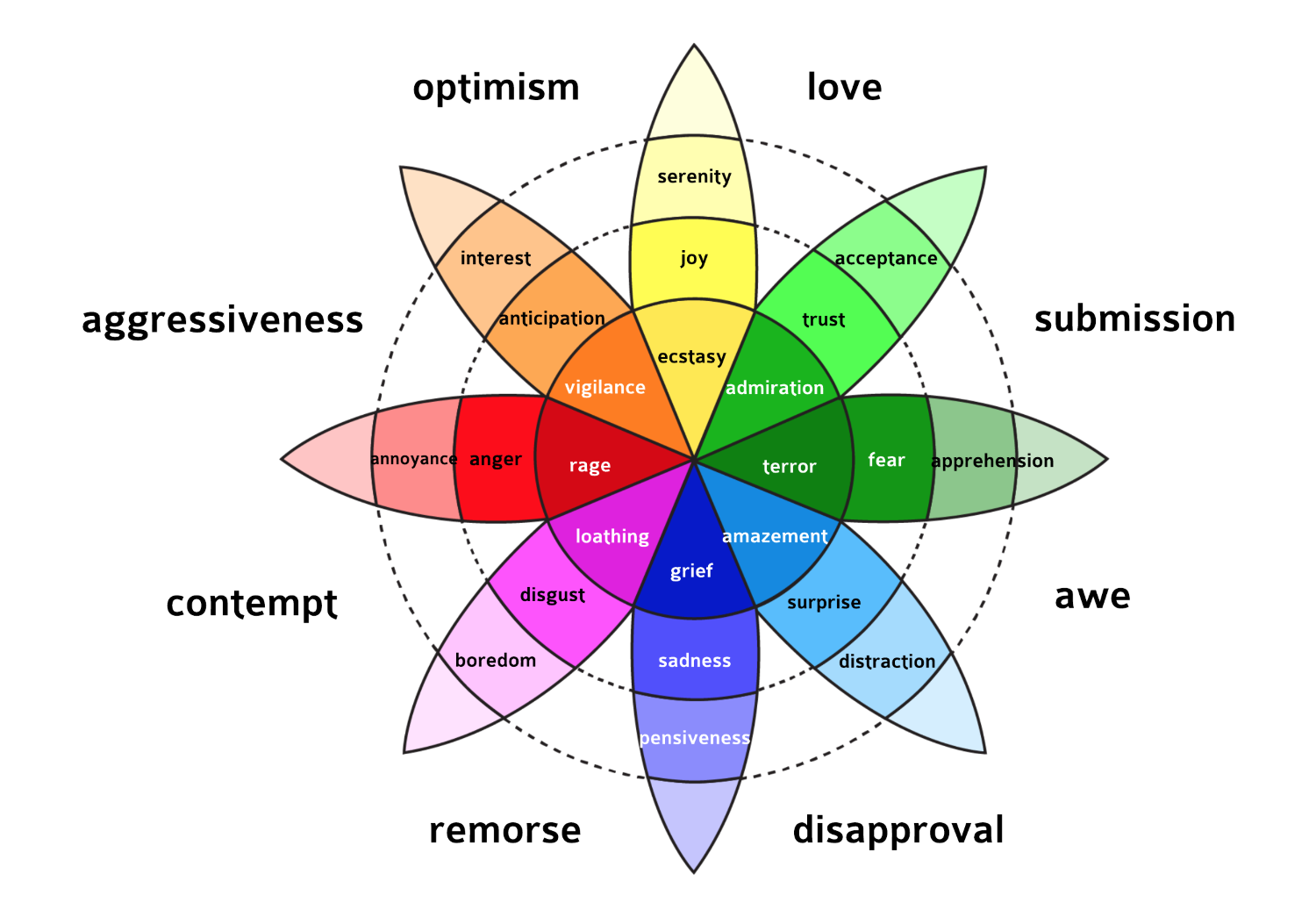There is no universal agreement on exactly what emotions are. The terms emotion and feeling are often used interchangeably.
Emotions are triggered involuntarily and involve physical reactions such as increased heart rate or elevated blood pressure when we get angry or become fearful.

The Wheel of Emotions, illustrated in the image above, is a model developed by the psychologist Robert Pluchik. The model arranges 32 emotions by levels of intensity and positivity. The colorful depiction is misleading, and only a closer observation reveals that the number of negative emotions far surpasses the positive ones. The emotions that are important to good product experience are generally limited to: anticipation, interest, joy, serenity, and trust. Most of the other emotions are on the spectrum of negative experience.
Where time and emotional states connect, is in the length of the emotion and its intensity. For example, when one is in a state of rage, that state consumes that person's entire emotional bandwidth. On the other hand, it is possible to be in a state of anticipation towards an upcoming meeting with a loved one, or the arrival of a new gadget and at the same time fear snakes, be interested in the latest news on travel to Mars, and be annoyed by a person in front of you in the line who just purchased the last chocolate doughnut you were craving the whole afternoon.
The state of agreement on what exactly feelings are, is similar to that of emotions. Some argue that emotions are brief experiences that can be measured--change of heart rate, for example, whereas feelings are persistent and mostly mental states.

The image above shows visual representations of 62 feelings. But like the wheel of emotions, the majority of these feelings are negative, and only 11 or 12 could be considered positive, in the context of good product experience. It may appear that it is difficult to keep people happy! But experienced product designers find that the opposite is true: people respond positively to products that are designed with users in mind.
Mounting evidence from social psychology and behavioral economics research shows that people are irrational beings. Important decisions are often made on a whim, influenced by mood, unconscious biases, and strong but misguided beliefs. And yet, there is also plenty of strong evidence to demonstrate highly rational mindsets.
Our cognitive ability to control and plan our behavior, is handled by our executive functions. The following are a few of these functions, and product design examples:
- Attention control: Being able to focus on what's important while ignoring what is not (at least for the moment):
- Print and online content: Fierce competition over the reader's attention is inherent to editorial and advertising content. Designers apply various techniques such as changes in typography, imagery, styling, and layout, to help readers distinguish between content or advertising, and conversely, get readers to shift their attention to the advertising.
- Inhibitory control: For example, being able to make the right choice which might not be fast nor easy, instead of falling back on the easiest, fastest, or familiar alternative, which may be satisfying in the immediate term, but wrong in the long run:
- Driving and texting is proven to be extremely dangerous, and yet drivers can't resist the temptation. Designers are exploring a variety of solutions that will prevent texting while driving.
- Working memory: This gets us deep into structures and functions of the brain. Suffice it to say, we don't need to remember everything forever. Many things we need to keep in our mind for a short time, only while we are using them to do what we are trying to do:
- Following recipes when cooking, workflow when completing a timesheet online.
- Cognitive flexibility: It is being able to see that going around the mountain is a viable option even if you planned to climb it. It is about managing several ideas at once in a way that gets you closer to where you want to be:
- Changing the location of a meeting when faced with unexpected traffic on your route; or, quickly moving from one category to another like price versus utility of an object
When these executive functions work well, they enable the next level of cognitive controls: reasoning, problem solving, and planning.
